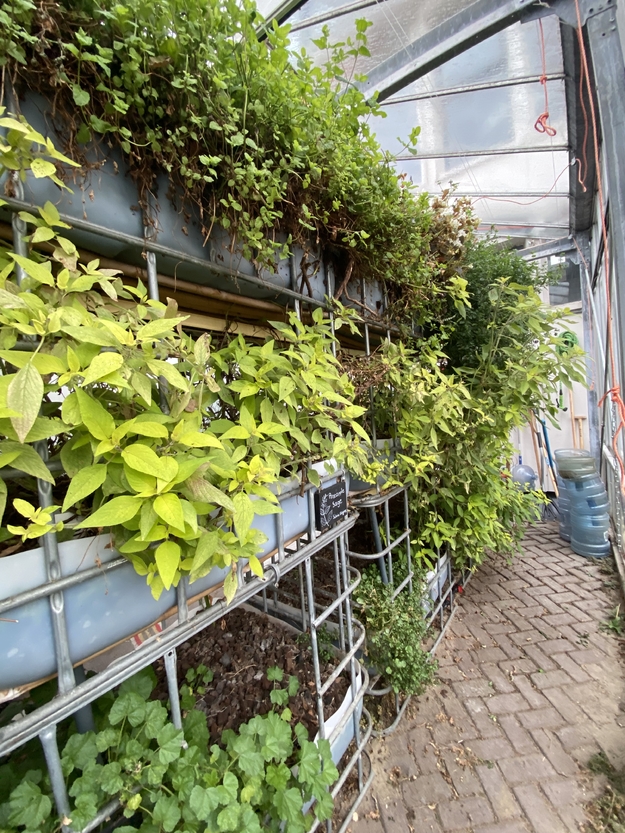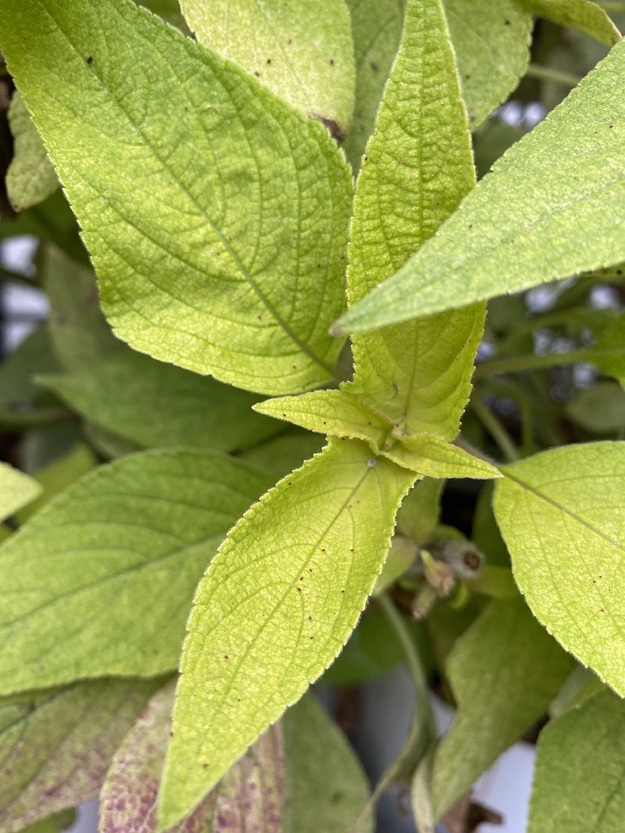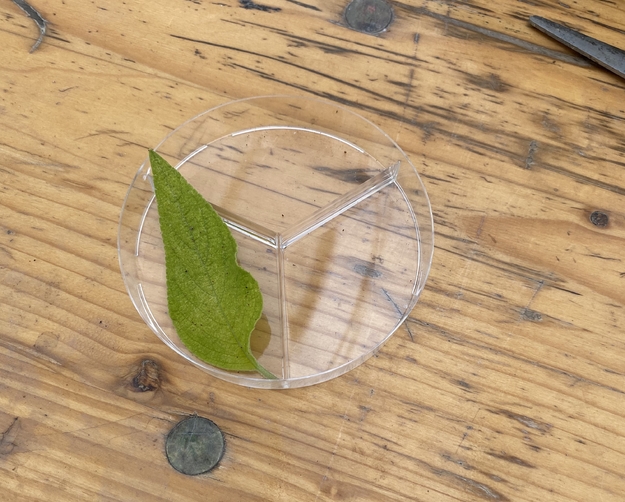Introduction to our famous Pineapple sage:
The pineapple sage, also known as Salvia elegans, is a perennial shrub native to Mexico and can grow up to 1.5 meters tall in cultivation. A simple search on Wikipedia would provide these basic details, but what cannot be discovered digitally is the magnificent scent that it releases and the beautifully bright green color it emits when healthy. So when I walked into the greenhouse one brisk morning and was not greeted by the marvellous smell of the fresh Pineapple sage, I became worried...
Identification of the pest:
I noticed the Pineapple sage had not regrown and had actually lost most of its fresh leaves, and upon examining the plant, I saw strange black particles peppered on the slightly wilted leaves. Looking closer and under the fragile leaves, I spotted minuscule red spiders that plagued the plant.
Fortunately, here at Mediamatic we have amazing in house expertise. Elise, one of our aquaponic experts, directed me to the very extensive knowledge page on the Mediamatic website and suggested to follow the instructions on preparing a sample for the laboratory to identify the pest. I then got a petri dish from the Clean Lab and cut an infested leaf from the plant, making sure it had small red dots on it.
I then placed it in the dish and tapped it shut, grabbed a cardboard box and filled it with empty egg cartons to protect the sample during transportation. I carefully placed the dish into the box, printed out a shipping label and tapped it shut and sent the box to the lab. It is very important to get same day shipping so the specimen does not die before it can be analyzed. I then sent the laboratory an email informing them of the shipment and asking to identify the pest and inform me of the cure. The response was very quick and the next day I ordered the treatment. They identified the presence of two spotted spider mites in our sample.
The cure is Spical Ulti-Mite, a small sachet filled with predatory mites which can be hung on the diseased plant. The predatory mites will quickly and effectively eat the infesting mites and eliminate the pest. Before adding the treatment to the plant, it is important to prune as much of the infested plant as possible without killing it completely. For this, we leave some of the branches, typically new growth, which is not yet infected, and cut down the rest of the plant to allow space for the new growth, and to remove as many mites as possible. A few days after sending the sample, the treatment arrived and my co-worker, Andreas and I were able to set up the sachets in the affected grow beds. As a preventative measure, we also added the predatory mites to the surrounding beds in case some pests went undiscovered.
Aftermath:
As of this writing, the pests have not yet been eliminated. The small red spider mites still persist on the plant, there is minimal new growth of the plant which looks pale in comparison to its healthy form and still has some slight yellowing on the leaves, indicating a deficiency of nutrients. The continuous decline in health of the plant is most likely due to the temperature change in the greenhouse from the high of 26℃ in the summer to a brisk 15℃ in the fall. As the weather in Amsterdam becomes colder, with a drastic increase in precipitation, the unheated greenhouse becomes cold and damp, which is not the Pineapple sage’s optimal growing conditions. Although it is still alive, we will have to say goodbye for now to the vivacious Pineapple sage plant that we knew, until it returns again next year in the spring.


